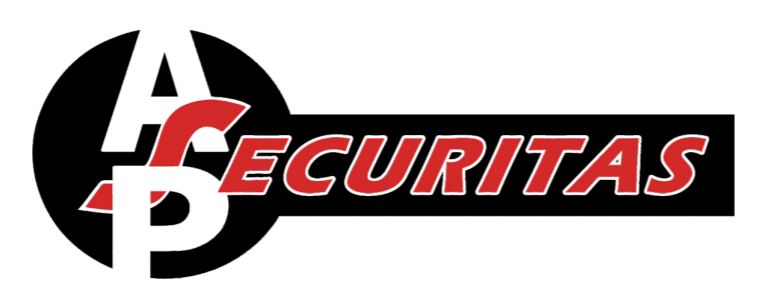
Anil Puri
CMD, APS group
A first generation serial entrepreneur, thought leader and an action catalyzer rolled into one – Anil Puri is a rare combination of a visionary, an innovator and a strategic thinker. He has used this combination to innovate and implement on-ground many new business ideas. His rich experience in various businesses has enabled him to nurture & mentor innovative ideas and scale them up.
Introduction
Human beings have a long-standing relationship with privacy and security. For centuries, we’ve locked our doors, held close our most precious possessions, and been wary of the threats posed by thieves. As time has gone on, our relationship with security has become more complicated as we’ve now got much more to be protective of. As technological advancements in security have got smarter and stronger, so have those looking to compromise it.
Cloud-based physical security technology is quickly becoming the favored option for workplace technology over traditional on-premise systems. The cloud is essential to data management for most businesses and there are many reasons – why? Cloud-based technology is sweeping the security industry because of its advanced abilities and unparalleled convenience.
The main difference with cloud-based technology is that your systems aren’t hosted on a local server. Instead, it’s managed by a third party, and accessible remotely. But how does the cloud factor into your physical security planning, and is it the right fit for your organization? Physical security is basic in many areas, and it’s no different in the IT security area. The physical locations where cloud offerings reside must be compliant to host physical security policies. The pandemic forced restricted access to physical sites but cloudbased solutions that enabled organizations to remotely monitor video, control cameras, assess system health, perform maintenance, and update firmware/software which have now become invaluable.
Increased flexibility
By migrating physical security components to the cloud, organizations have more flexibility. In terms of physical security, examples of that flexibility include being able to make adjustments to security systems on the fly. Changes to door schedules, access permissions, and credentials are instant with a cloud-based access control system, and the admin doesn’t need to be on the property. This is especially important for multi-site and enterprise organizations, who need to be able to access the physical security controls for every location, without having to travel.
Support for remote access and monitoring
The cloud has also become an indispensable tool for supporting remote work and distributed teams in recent years. When you can’t have every employee onsite at all time, whether due to social distancing or space limitations, remote access to your physical security technology is essential. Let’s look at the scenario of an employee getting locked out. With remote access, one can see that an unlock attempt was made via the access control system, and check whose credentials were used. With video access control or integrated VMS, one can also check video footage to make sure the person is who they say they are. Then, unlock the door remotely, or notify onsite security teams if needed – all on your own device without leaving the house. Being able to monitor what’s happening across the property, with video surveillance, access activity, and real-time notifications, improves incident response time and increases security without additional investment on your part.
Greater scalability
Physical security plans often need to account for future growth and changes in business needs. But it’s nearly impossible to anticipate every possible scenario when setting physical security policies and systems. That’s where the cloud comes into play. Current on-premise systems are often cumbersome to scale up or back, and limited in the ability to easily or quickly adapt the technology to account for emerging security needs. Cloud-based physical security technology, on the other hand, is inherently easier to scale. Because the entire ecosystem lives in the cloud, all software updates can be done over-the-air, and there aren’t any licensing requirements to worry about if you need to scale the system back.
Improved RoI and future-proofing
The cloud-based technology allows organizations to take a proactive approach to their physical security planning. Rather than waiting for incidents to occur and then reacting, a future-proof system utilized automations, integrations, and data trends to keep organizations ahead of the curve. In short, the cloud allows you to do more with less up-front investment. With some of the solution providers, you only pay for what you use, and it’s easy to make adjustments as business needs shift. The seamless nature of cloud-based integrations is also key for improving security posturing. System administrators have access to more data across connected systems, and therefore a more complete picture of security trends and activity over time. Taking advantage of AI data analytics, building managers can utilize cloud-based technology to future-proof their physical security plans, and create a safer building that’s protected from today’s threats, as well as tomorrow’s security challenges.
Access control
Touchless access control is a cloud-based solution that can help businesses restrict unauthorized entries to their buildings. Using an access control system is an essential physical deterrent to protecting your business’s on-site data, with touchless access capabilities also providing convenience to your employees. In schools, law firms, and other businesses that house sensitive information and assets, it is essential to provide clients with the assurance that their data is in good hands. Employees can use touchless access using mobile credentials, which reduces costs and losses on creating new keys. Users may have a longer induction process with a conventional access system as they wait for your security staff to hand over their keycard. Pin pad door locks are no longer suitable in a post-pandemic climate, as they increase the number of building touchpoints users must come into contact with as they enter the building, which may lead to contamination. Instead, touchless access control equips you with the tools to reduce touchpoints at the entrance to your facility and promote user wellbeing. Mobile credentials can operate door locks via BlueTooth for smoother entry without users having to present their mobile devices directly in front of the reader. Instead, you can detect the device inside a pocket or bag for added convenience. Touchless access control provides better health and safety procedures and added convenience while securing your building from unauthorized access.
Internal access control & IoT
Internal access control can create a smarter building and restrict access to areas within the building for a zero-trust approach to building security. A zero-trust security strategy is essential to protect your business from internal misconduct and avoid sensitive data exposure. With the installation of internal door locks comes the opportunity to use the internet of things (IoT) and occupancy management solutions. Occupancy management integrates with internal door locks to accurately picture how often employees use your facilities. For businesses introducing a hybrid or remote work model, occupancy management offers invaluable information that could inform your decision to downsize your office space. If your occupancy management data reveals that large portions of your office space are unused, this would indicate the potential for downsizing. You can integrate IoT technology with internal door locks to reduce your monthly overheads by switching off appliances, heating, and lighting in unoccupied rooms. When the door lock is triggered, the room will light up, and the system will switch on appliances. When the room is unoccupied, devices and appliances will be switched off to conserve energy. Not only will this make your building more energy-efficient, but it will also save your business costs on electricity and heating.
Wellness verification
One can integrate wellness verification software with access control technology to provide health and safety protection for your building and educate your HR team on the mental wellbeing of your employees. Since the pandemic, health and safety have become a priority consideration for any security strategy. Upon accessing the building via access control technology, users will fill out survey forms on their mobile devices. You can use these surveys to screen for coronavirus symptoms and protect your space from symptomatic individuals. Keeping employees motivated and productive is essential to the overall performance of your business.
Converging physical and cybersecurity
With the increased adoption of cloud-based technologies and IoT technologies, there comes an increased need to consider physical and cybersecurity as merged concepts. Since assets are becoming both physical and digital, it is becoming increasingly challenging to approach security with separate departments for physical and cybersecurity. Housing both teams separately can be detrimental to communications that could help your business to respond quickly and effectively to security incidents and security threats. By merging security and IT teams, you can have a faster response to security threats that fall under the jurisdiction of both teams. This merger can decrease the workload of both teams for a more efficient strategy and may present the opportunity to streamline your team and cut costs.
Using AI analytics
Security camera systems are a staple feature in any physical security strategy. Not only can they help to provide evidence when a crime occurs, but they can also act as a deterrent for crime. However, it is difficult for security personnel to monitor security camera feeds constantly, so security cameras are rarely helpful in preventing a crime on your property. AI analytics can help your security team identify potential security threats without religiously monitoring the video camera feed. AI analytics can trigger alerts for security events that allow your security staff to respond quickly and potentially prevent the occurrence of a crime. With this innovative technology, your security staff will have more time to focus on critical tasks, and you will optimize the functionality of your security cameras.
Especially with cloud-based physical security control, you’ll have added flexibility to manage your system remotely, plus connect with other building security and management systems and prevent unauthorized entry, ensure proactive intrusion detection, facilitate scalable physical security implementation, seamless system integrations and access audit trails and analytics.
Conclusion
Safety is essential for every size of business whether you’re a single office or a global enterprise. Physical security is in the midst of a digital transformation. Organizations are accelerating their adoption of cloud-based technologies to both enhance security and to provide expanded business value. The technology evolution is allowing companies to leverage next generation analytics and AI to provide a robust platform for securing both physical and intellectual assets. The migration of businesses to the cloud is one of the latest trends that is going to disrupt the traditional operational models. This shift has been attributed to digital transformation across various industries, increasing improvement of the internet and adoption of Artificial Intelligence. The physical security best practices based on cloud based technology as outlined above can help in establishing a better system. Cloud-based security tools can help a business with a security strategy that is competent to face the challenges posed by complexity of the ever dynamic security environment.
